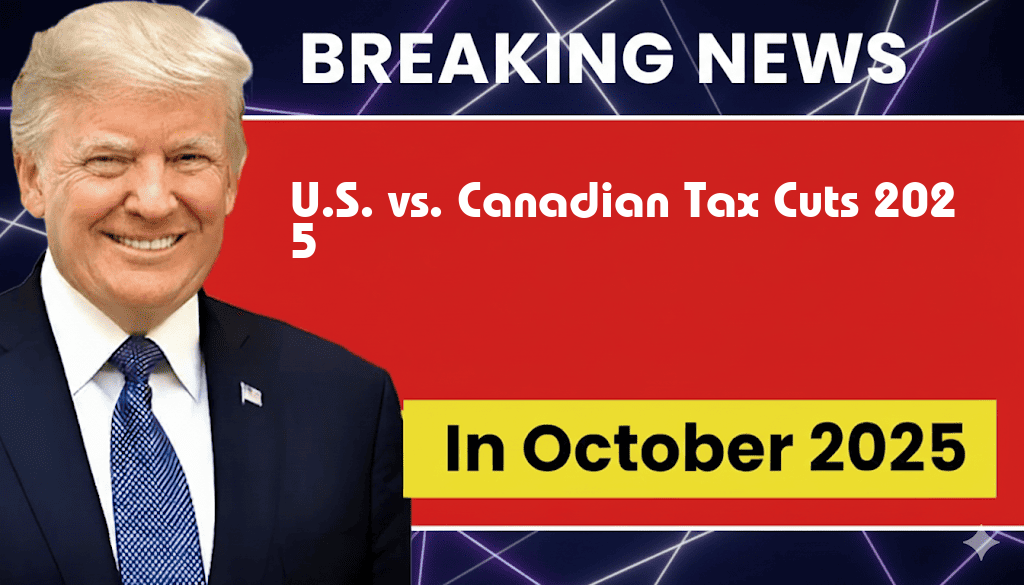

As the economic landscape evolves, tax policies play a crucial role in shaping the financial futures of citizens in both the United States and Canada. In 2025, the projected tax cuts for individuals in the U.S. amount to approximately $3,752, while Canadian citizens are expected to benefit from cuts totaling C$5,200. This article provides an international perspective on these tax changes, examining their implications for individuals and the broader economy in both countries.
Comparative Analysis of Tax Cuts
The tax reforms slated for 2025 in both the U.S. and Canada reflect differing economic strategies and political priorities. The figures indicate that Canadians will receive more substantial tax relief compared to their American counterparts, prompting discussions about the effectiveness and potential consequences of such cuts.
U.S. Tax Cuts Overview
- Amount: $3,752
- Effective Date: 2025
- Focus Areas: Middle-class taxpayers, small businesses
- Objectives: Stimulate economic growth, increase disposable income
The U.S. tax cuts are primarily aimed at middle-class taxpayers and small businesses, providing them with increased disposable income. According to the Forbes Finance Council, these cuts are intended to spur consumer spending and drive economic growth, particularly in the wake of the pandemic’s economic challenges.
Canadian Tax Cuts Overview
- Amount: C$5,200
- Effective Date: 2025
- Focus Areas: Working families, low-income earners
- Objectives: Alleviate poverty, enhance social equity
In contrast, the Canadian tax cuts are more generous, reflecting a commitment to social equity and support for low-income earners. These cuts are designed to alleviate poverty and improve the quality of life for working families. The Government of Canada has emphasized that these changes will help bolster the economy by ensuring that more citizens can participate in consumer markets. For more details on the specifics of Canadian tax policy, visit Wikipedia.
Implications for Citizens
As these tax cuts roll out, both countries face unique challenges and opportunities. In the U.S., the modest amount of the tax cut may not significantly alter the financial landscape for many households. However, the strategic focus on small businesses could lead to job creation and economic revitalization.
Conversely, the Canadian approach aims at broader social benefits, which may lead to a more significant impact on reducing income inequality. By providing larger tax cuts, the Canadian government is positioning itself to enhance consumer spending among low- and middle-income families, potentially leading to a more robust economy.
Economic Context
| Country | Tax Cut Amount | Focus Areas | Economic Goals |
|---|---|---|---|
| United States | $3,752 | Middle-class taxpayers, small businesses | Stimulate growth, increase disposable income |
| Canada | C$5,200 | Working families, low-income earners | Alleviate poverty, enhance social equity |
Conclusion
The tax cuts for 2025 in the U.S. and Canada highlight the divergent paths these neighboring nations are taking in addressing economic challenges. While the U.S. aims for a more targeted approach to stimulate growth, Canada is focusing on broader social benefits. As citizens prepare for these changes, the outcomes of these policies will be closely monitored by economists and policymakers alike.
Frequently Asked Questions
What are the main differences between U.S. and Canadian tax cuts in 2025?
The U.S. tax cuts in 2025 amount to $3,752, while the Canadian tax cuts are approximately C$5,200. This highlights a significant difference in the approach to tax relief between the two countries.
How do these tax cuts impact citizens in the U.S. and Canada?
The tax cuts provide financial relief to citizens, with the U.S. offering a smaller amount compared to Canada’s larger cuts. This may lead to differing economic outcomes and consumer spending habits in each country.
What factors contribute to the size of tax cuts in each country?
Several factors influence the size of tax cuts, including government fiscal policies, economic conditions, and the overall tax structure. Both the U.S. and Canada have unique economic landscapes that shape their respective tax strategies.
Are these tax cuts expected to change in the future?
While the current figures for tax cuts in 2025 are set, future changes will depend on political decisions, economic conditions, and public sentiment in both the U.S. and Canada.
How do these tax cuts compare on a global scale?
When viewed from an international perspective, the U.S. and Canadian tax cuts reflect broader trends in tax policy and economic strategy among developed nations, making it essential to analyze their implications in a global context.





